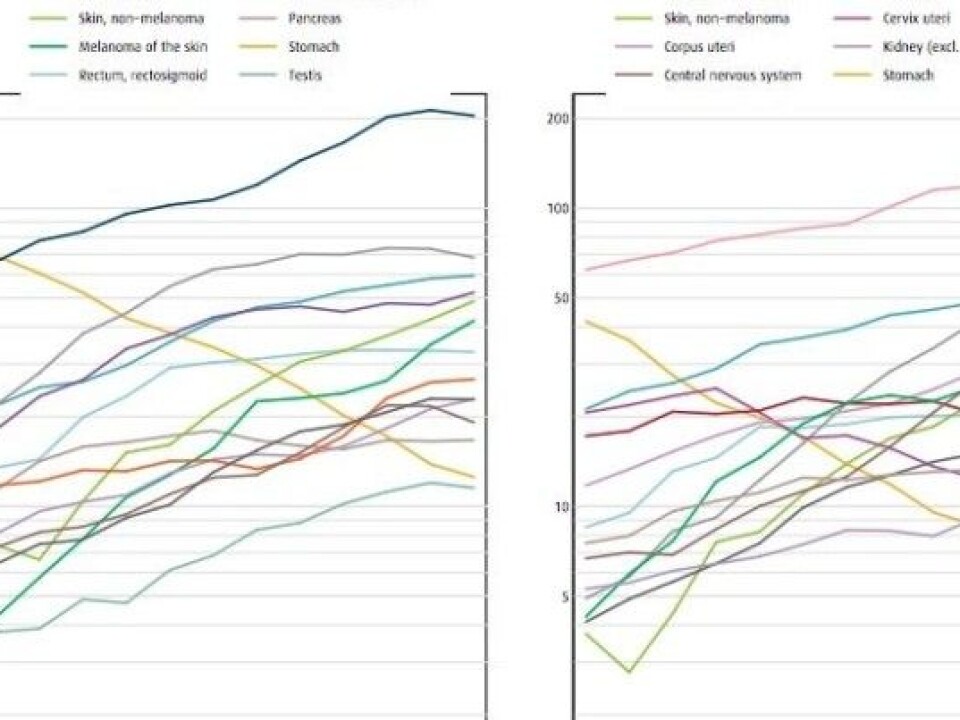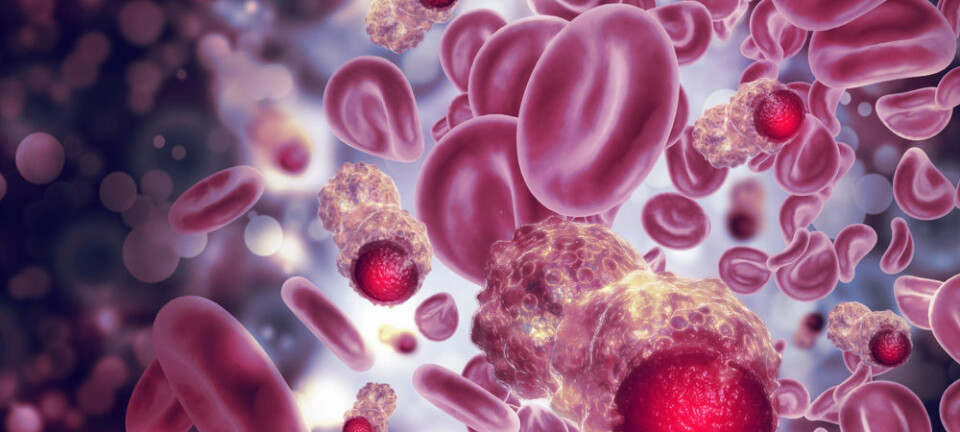
Stomach cancer in deep decline
The incidence of most cancers has increased since Norway first began collecting cancer statistics in the 1950s. But the incidence of stomach cancer has remarkably plummeted.
Many of today’s most common cancers are closely linked to lifestyle. And for most cancers, the incidence climbs as a country becomes increasingly wealthy. It’s a trend that can be seen across the Western world.
Another reason why most cancers rates are climbing is because the biggest risk factor for nearly all cancers is age. A total of nine out of ten cases of cancer occur after a person turns 50 — which means that as Western populations age, cancer rates will naturally increase.
But stomach cancer has bucked this trend — and not just in Norway, says Giske Ursin, director of Norway’s Cancer Registry.
“There has been a sharp decline in the incidence of stomach cancer throughout the world. In the Nordic countries, we see the decline right from the time we started collecting cancer data in the 1950s,” Ursin says.
Better hygiene

This sharp drop in cancer rates is primarily due to the decline in the presence of the bacterium Helicobacter pylori, Ursin says.
This is a bacterium that occurs in the lining of the stomach and is the main cause of peptic ulcers. There are a lot of data that suggest the bacterium is linked to gastric cancer, says Ursin.
But there are major differences from country to country in how common the bacterium is.
This bacterium, which is related to hygiene and is spread by close contact, has been widespread in Norway. But its prevalence has declined.

Thomas de Lange, a researcher at the Cancer Registry, says that most people who have the bacteria are infected as children, either from their family or from their surroundings. However, infection is rare in Norway today due to good hygienic conditions.
“The reason for the decrease in the prevalence in Western countries is improved living standards and hygienic conditions,” he wrote in an email.
Older people still carry the bacterium
The bacterium is much more common in the elderly than in younger people, and it is usually the oldest individuals who get stomach cancer.
Four hundred and seventy cases were registered in Norway in 2017. The average age at diagnosis was 75, figures from the Cancer Registry show.
In a Norwegian study published in the journal Helicobacter in 2016, researchers looked more closely at the occurrence of Helicobacter pylori in all age groups in Norway.
In 12 to 17 age group, rougly 20 per cent carried the bacterium. Among those over 60, 45 per cent carried it.
Half the world’s population are carriers
Many people across the globe still have Helicobacter pylori. According to the World Health Organization, around half of the population carries the bacterium.
But Ursin says it isn’t necessary to treat people who have the bacterium to cut the occurrence of gastric cancer, at least in Norway. One reason for this is because of concerns about growing incidence of antibiotic resistance. Antibiotics should be used only when they are absolutely necessary, she said.
De Lange says that the bacterium is treated with a combination of two very special antibiotics combined with an acid-inhibiting treatment.
There are clear guidelines in Norway for when to treat Helicobacter pylori infection. If you have an ulcer in the stomach or duodenum and have tested positive for helicobacter test, you should be treated.
But most people live well with the bacteria and do not need treatment, says Ursin.
Less salted and smoked food
Another important reason why the incidence of stomach ulcers has fallen so sharply over the past 60 years is that when refrigerators and freezers came to Norway, Norwegians stopped eating so much salted and smoked food, Ursin says.
The combination of a drop in the prevalence of the gastric ulcer bacterium and the change in how people preserved food has thus caused incidences of stomach cancer to decline steeply.
“Imagine if we had another form of cancer where we could show the same reduction in incidence — this would have been a huge success. And it’s happened without any great effort in cancer prevention — it’s just happened,” Ursin said.
East Europeans have higher incidences
A study conducted by the Cancer Registry in 2017 catalogued the incidence of cancer among immigrants in Norway and compared it with the rest of the population. The study was published in the journal International Journal of Cancer.
Overall, this study shows that immigrants have a lower incidence of most cancers than Norwegians.
But there are some exceptions. Immigrants who come to Norway from Eastern Europe have a particularly high incidence of gastric cancer.
“This fits with the World Health Organization cancer maps, which show a belt with higher incidences of gastric cancer from East Asia going west via Russia and some Eastern European countries. Rates of this cancer are also higher in Poland. The lowest incidence and mortality of this cancer is in the westernmost part of Europe,” says Ursin.
------------------------------
Read the Norwegian version of this article at forskning.no































